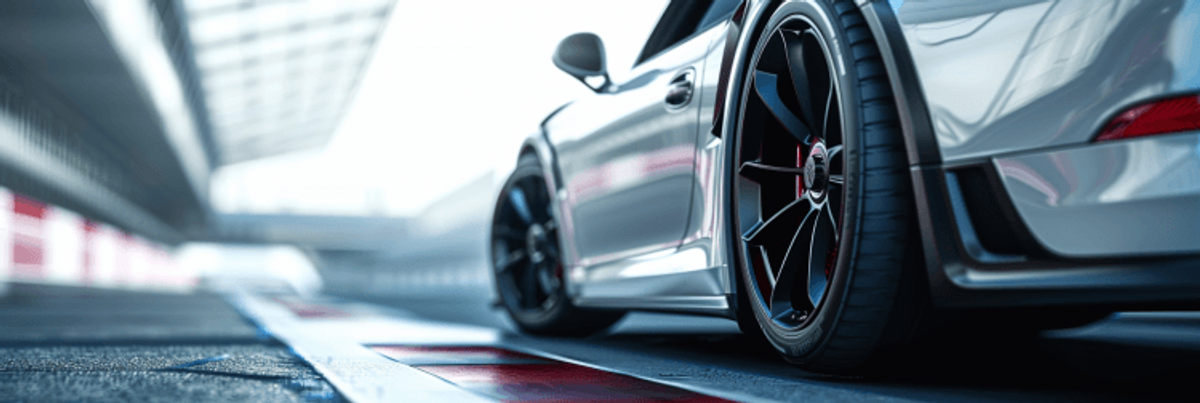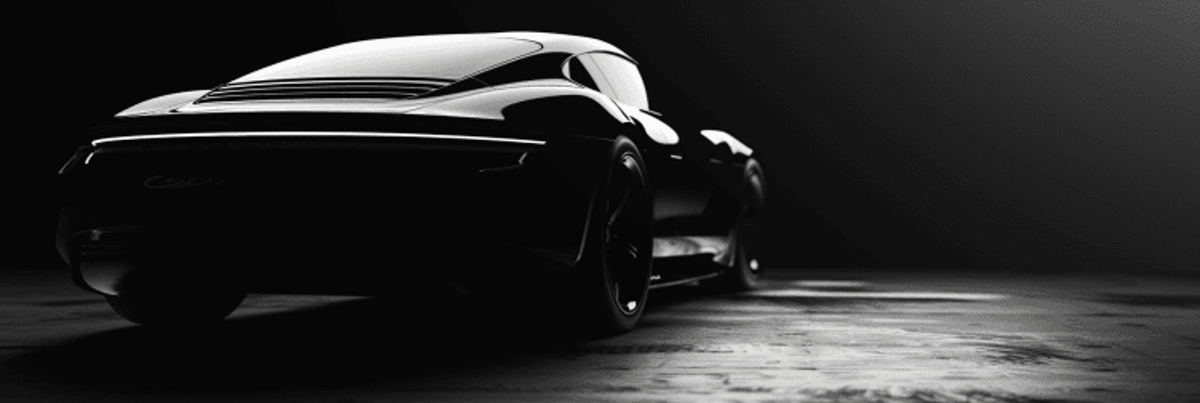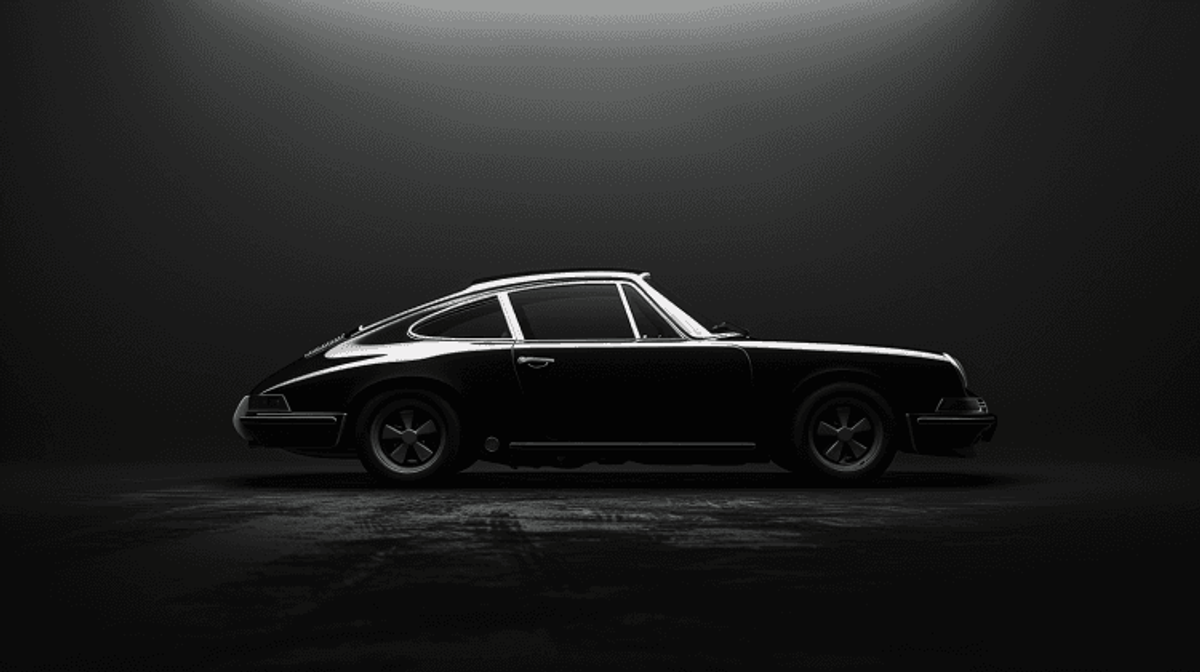The Prestige Factor: Why Porsche Branding Dominates Luxury & Creates Automotive Icons

Porsche has mastered the art of luxury automotive branding like few others in the industry. The German manufacturer's distinctive approach combines heritage storytelling with cutting-edge innovation, creating a brand identity that commands premium pricing while maintaining fierce customer loyalty. From the iconic 911 silhouette to the unmistakable engine roar, every element of Porsche's brand experience reinforces their commitment to performance and exclusivity.
Quick Summary
Porsche's branding prowess stems from its seamless blend of heritage, innovation, and exclusivity. Evolving from a racing-focused brand to a luxury lifestyle icon, Porsche successfully maintains its image while diversifying into lifestyle products and electric vehicles, highlighted by the Taycan. Their brand strategy focuses on emotional connections, enabling outstanding customer loyalty and premium pricing, ensuring that Porsche remains a highly valued leader in the luxury automotive market.
The brand's strategic positioning goes far beyond manufacturing sports cars. Porsche has successfully extended their brand equity into lifestyle products, motorsports, and electric vehicles while preserving their core identity. Their marketing philosophy centers on emotional connection rather than mere product features, targeting affluent consumers who view their vehicles as symbols of achievement and engineering excellence.
This calculated approach has yielded remarkable results. Porsche consistently ranks among the world's most valuable automotive brands, with profit margins that exceed most luxury competitors. Their branding strategy offers valuable insights for companies seeking to build premium market positions across any industry.
The Evolution of Porsche's Brand Identity
Porsche's brand identity transformation spans seven decades of strategic evolution. The Stuttgart-based manufacturer evolved from a pure racing company into a luxury lifestyle brand that commands premium pricing across multiple market segments.
From Racing Heritage to Luxury Lifestyle
Porsche's brand identity originated from Ferdinand Porsche's racing DNA in 1948, when the first 356 prototype emerged from a converted sawmill. The company's Porsche branding strategy initially focused exclusively on motorsport performance, with early models serving as race cars for weekend competitions. This racing heritage created the foundation for what would become one of the most recognizable luxury automotive branding approaches in the industry.
The brand's transformation began in the 1970s when Porsche recognized the opportunity to extend beyond pure performance vehicles. The introduction of the 911 Turbo in 1975 marked a pivotal moment in Porsche brand positioning, as it combined racing technology with luxury appointments that appealed to affluent consumers seeking both performance and prestige. This shift established the template for Porsche's dual identity as both a racing icon and luxury lifestyle symbol.
By the 1980s, Porsche marketing strategies embraced the concept of "everyday supercars," positioning their vehicles as practical luxury options for successful professionals. The brand's lifestyle marketing approach expanded to include exclusive driving experiences, branded merchandise, and partnerships with luxury hotels and resorts. This high-end car branding strategy generated additional revenue streams while reinforcing the brand's premium positioning.
The 1990s witnessed Porsche's deliberate expansion into lifestyle products, including watches, sunglasses, and leather goods. These products carried the same design language and quality standards as their vehicles, creating a cohesive Porsche luxury experience that extended beyond automotive ownership. The brand's licensing agreements with companies like TAG Heuer and Rolex solidified its position in the luxury goods market.
Key Milestones in Brand Development
Porsche's brand development follows distinct phases that reflect strategic responses to market conditions and consumer preferences. The company's premium automotive brand status achieved international recognition through carefully orchestrated product launches and marketing campaigns that emphasized exclusivity and performance heritage.
The 1996 introduction of the Boxster represented a crucial milestone in Porsche brand identity evolution. This entry-level sports car democratized the Porsche experience while maintaining the brand's core values of engineering excellence and driving pleasure. The Boxster's success demonstrated that Porsche could expand its customer base without diluting its luxury branding credentials.
The 2002 launch of the Cayenne SUV marked perhaps the most significant transformation in Porsche's brand positioning. Despite initial criticism from purists, the Cayenne generated substantial revenue that funded the development of future sports cars. The SUV's success validated Porsche's strategy of leveraging its brand equity across different vehicle segments while maintaining premium pricing power.
Porsche's acquisition by the Volkswagen Group in 2012 provided resources for accelerated brand expansion. The company launched the Macan compact SUV in 2014, followed by the four-door Panamera sedan, creating a complete luxury vehicle portfolio. Each model maintained distinct Porsche design elements and performance characteristics that reinforced the brand's coherent identity.
The 2019 introduction of the Taycan electric vehicle demonstrated Porsche's commitment to sustainable luxury without compromising performance. The Taycan's development required significant investment in electric vehicle technology while preserving the brand's emotional connection with driving enthusiasts. This milestone established Porsche as a leader in premium electric vehicle branding.
Recent brand developments include the expansion of Porsche Experience Centers, which provide immersive customer experiences combining driving education, fine dining, and brand heritage displays. These facilities serve as physical manifestations of the Porsche luxury experience, reinforcing the brand's premium positioning through experiential marketing approaches.
Core Elements of Porsche Branding Strategy

Porsche's branding strategy revolves around three fundamental pillars that have sustained its position as a luxury performance icon for over seven decades. These core elements work in harmony to create a cohesive brand identity that resonates with affluent consumers worldwide.
The Iconic Porsche Crest and Logo
The Porsche crest serves as the cornerstone of the brand's visual identity, featuring a rearing horse that symbolizes power, agility, and the exhilaration of driving. This distinctive emblem draws inspiration from the coat of arms of Württemberg, connecting the brand to its German heritage while communicating strength and protection through its shield-like design.
The color palette of gold, red, and black carries deep symbolic meaning within Porsche brand identity. Gold represents luxury and prestige, red embodies passion and performance, while black conveys sophistication and exclusivity. These colors consistently appear across all brand touchpoints, from vehicle exteriors to dealership environments, creating instant recognition and reinforcing brand values.
Recent modernization efforts have enhanced the crest's digital and analog applications without compromising its heritage appeal. The updated wordmark provides greater flexibility across various media formats while maintaining the visual hierarchy that places the crest at the center of brand communications. This evolution demonstrates how Porsche balances tradition with contemporary design requirements.
The logo's placement strategy follows strict guidelines that prevent overbranding while ensuring maximum impact. Porsche applies the crest selectively, understanding that restraint increases its perceived value and reinforces the brand's premium positioning. This approach distinguishes Porsche from competitors who rely on excessive logo repetition, instead creating anticipation and desire through strategic visibility.
Distinctive Design Language and Aesthetics
Porsche's design philosophy centers on the principle of functional beauty, where every aesthetic element serves both form and performance. The brand's design language emphasizes sleek, aerodynamic silhouettes that communicate speed and precision while maintaining elegance and sophistication.
The iconic 911 profile has become synonymous with Porsche luxury branding, featuring the distinctive sloping roofline, pronounced wheel arches, and sculpted body surfaces that create visual tension and movement. This design DNA extends across the entire model range, from the Boxster to the Cayenne, ensuring brand consistency while allowing for model-specific characteristics.
Color psychology plays a crucial role in Porsche's aesthetic strategy. The brand's signature colors—Guards Red, Racing Yellow, and Chalk—have become cultural symbols that transcend automotive enthusiasts. These hues appear in carefully curated combinations that enhance the vehicle's sculptural qualities while reinforcing brand recognition in diverse environments.
Interior design follows the same principles of purposeful elegance, featuring driver-focused cockpits with intuitive controls and premium materials. The dashboard layout prioritizes functionality while incorporating luxury elements such as leather-wrapped surfaces, aluminum accents, and sport-inspired details that connect occupants to the driving experience.
Surface treatments and textures receive meticulous attention, with each material selection contributing to the overall sensory experience. From the tactile feedback of control knobs to the visual depth of paint finishes, every element reinforces Porsche's commitment to craftsmanship and attention to detail.
Performance-Driven Brand Messaging
Porsche marketing communications focus intensely on the emotional connection between driver and machine, positioning ownership as a gateway to freedom, achievement, and self-expression. The brand's messaging strategy targets affluent consumers who view their vehicles as extensions of their identity and lifestyle aspirations.
Performance specifications receive prominent placement in all communications, with precise engineering achievements communicated through specific metrics rather than vague promises. Acceleration times, top speeds, and handling capabilities are presented as measurable proof of Porsche's engineering excellence, appealing to customers who appreciate technical precision.
The brand's messaging architecture builds on three core themes: heritage, innovation, and exclusivity. Heritage messaging connects current models to racing achievements and engineering breakthroughs, while innovation content highlights cutting-edge technologies and sustainable solutions. Exclusivity messaging reinforces the brand's premium positioning through limited production runs and personalization options.
Emotional storytelling complements technical specifications by focusing on the transformative experience of Porsche ownership. Brand narratives emphasize moments of connection between driver and vehicle, whether navigating mountain roads or arriving at important destinations. These stories resonate with customers who seek vehicles that enhance their lifestyle and provide memorable experiences.
Sustainability messaging has emerged as a critical component of Porsche brand positioning, particularly with the introduction of electric models like the Taycan. The brand communicates environmental responsibility without compromising performance expectations, demonstrating that luxury and sustainability can coexist through advanced engineering solutions.
- Porsche AG Annual Report 2024
- Brand Finance Global 500 2024
- Interbrand Best Global Brands 2024
- Porsche Brand Guidelines 2024
- Luxury Institute Brand Status Report 2024
Porsche's Premium Positioning in the Automotive Market

Porsche has established itself as the definitive luxury sports car manufacturer through strategic market positioning that combines performance excellence with exclusivity. The brand's premium positioning extends far beyond vehicle specifications, encompassing a comprehensive luxury experience that resonates with affluent consumers seeking both status and driving satisfaction.
Luxury Sports Car Segment Leadership
Porsche dominates the luxury sports car segment through measurable performance metrics and consumer recognition. The brand earned the highest ranking in the 2024 J.D. Power U.S. Automotive Performance, Execution and Layout (APEAL) Study, marking its eighth victory in a decade. This achievement demonstrates Porsche's consistent ability to exceed premium brand averages in owner satisfaction and emotional attachment.
The iconic 911 model serves as the cornerstone of Porsche's segment leadership, achieving the highest scores for owner satisfaction within the luxury sports car category. This model represents the perfect balance of performance capability and everyday usability that defines Porsche's market position. The 911's enduring design philosophy and engineering excellence create a benchmark that competitors struggle to match.
Porsche's luxury branding strategy extends beyond individual models to encompass the entire ownership experience. The brand's pricing strategy reflects its high perceived value, allowing Porsche to maintain premium margins while justifying the emotional investment customers make in purchasing not just a vehicle, but a lifestyle statement. This psychological pricing approach keeps Porsche at the forefront of luxury automotive desirability without alienating its target demographic.
The brand's marketing communications reinforce its segment leadership through targeted campaigns that emphasize performance specifications alongside emotional storytelling. These efforts highlight Porsche's unique position as a manufacturer that delivers both track-ready performance and daily driving comfort, a combination that distinguishes it from pure performance brands or luxury manufacturers lacking sporting credentials.
Brand Exclusivity and Heritage Appeal
Porsche's exclusivity stems from its German engineering excellence and racing heritage, creating a distinctive identity that competitors cannot replicate. This heritage-based positioning differentiates Porsche from American performance vehicles like the Chevrolet Corvette and Dodge Viper, establishing a unique market niche that combines European sophistication with proven racing pedigree.
The brand's tagline "There is no substitute" encapsulates its exclusivity strategy, emphasizing that Porsche offers a unique blend of sporty luxury and everyday usability that remains unmatched in the automotive industry. This positioning reinforces the brand's premium status while appealing to customers who demand both performance and practicality from their luxury vehicles.
Porsche's recent "Engineered for magic, every day" campaign represents a strategic evolution in brand messaging, designed to expand market appeal while maintaining core performance values. This campaign targets broader demographics, including younger buyers and women, without compromising the brand's exclusive positioning. The messaging acknowledges that Porsche ownership extends beyond weekend track days to encompass daily driving experiences that retain the brand's distinctive character.
The brand's heritage appeal extends through its direct distribution system, which enhances customer engagement and creates exclusive touchpoints throughout the ownership journey. This approach allows Porsche to maintain control over the customer experience while reinforcing the brand's premium positioning through personalized service and exclusive access to events and experiences.
Digital marketing initiatives further strengthen Porsche's exclusivity by creating curated content that celebrates the brand's racing heritage while showcasing modern innovations. These efforts deepen brand loyalty among existing customers while attracting new buyers who appreciate the combination of historical significance and contemporary performance that defines the Porsche brand identity.
Marketing and Communication Strategies

Porsche's marketing communications consistently emphasize luxury, performance, and heritage across all platforms, creating a unified brand experience that reinforces its premium positioning. The brand's strategic messaging targets affluent consumers who view their vehicles as symbols of achievement and performance excellence.
Motorsport Marketing and Brand Activation
Motorsport forms the foundation of Porsche's brand identity, with campaigns like "The Road to Le Mans" directly connecting racing heritage to consumer experience. The brand activates this motorsport DNA through immersive track experiences, professional driving courses, and exclusive racing events that allow customers to experience the performance capabilities firsthand.
Porsche's racing legacy spans over 70 years, with more than 30,000 race victories across various motorsport categories. This heritage translates into powerful brand activation through the Porsche World Roadshow, which travels globally to demonstrate vehicle capabilities in controlled environments. The brand capitalizes on major racing events like the 24 Hours of Le Mans, where Porsche holds the record for most overall victories with 19 wins.
The company's motorsport marketing extends beyond traditional racing through customer racing programs, where owners can participate in track days and amateur racing series. These initiatives create emotional connections that transcend typical automotive marketing, positioning Porsche ownership as membership in an exclusive performance community. The GT3 Cup series, running in multiple countries, directly engages customers in competitive motorsport while showcasing the brand's racing technology.
Professional racing partnerships with teams and drivers create authentic content opportunities, with behind-the-scenes access and technical insights shared across marketing channels. The brand's Formula E entry with the Taycan Turbo S demonstrates how motorsport marketing adapts to electric vehicle positioning while maintaining performance credibility.
Digital Presence and Social Media Approach
Porsche's digital strategy integrates social media thinking into its overall marketing approach, focusing on engagement rather than traditional advertising. The brand utilizes Instagram's visual platform to showcase design details, manufacturing processes, and customer stories, generating authentic content that resonates with automotive enthusiasts.
Social media campaigns feature user-generated content, encouraging owners to share their Porsche experiences through branded hashtags and exclusive events. The company collaborates with automotive influencers and lifestyle personalities who align with its brand values, creating authentic endorsements that reach targeted demographics. Digital launches, including the Taycan's reveal strategy, demonstrate how Porsche adapts traditional automotive marketing to social media formats.
The brand's YouTube channel features technical content, racing footage, and behind-the-scenes manufacturing videos that educate consumers about engineering excellence and craftsmanship. Interactive digital experiences, including virtual reality test drives and augmented reality features, allow potential customers to engage with products before visiting dealerships.
Porsche's digital presence extends to exclusive online communities and apps that provide owners with maintenance schedules, performance data, and access to special events. The My Porsche app connects owners to their vehicles, providing remote monitoring capabilities and exclusive content that reinforces the luxury ownership experience.
Email marketing campaigns target specific customer segments with personalized content based on ownership history and preferences. The brand's digital advertising focuses on performance metrics and lifestyle imagery, avoiding generic luxury messaging in favor of specific technical achievements and emotional connections.
Experiential Marketing Initiatives
Porsche Experience Centers represent the pinnacle of experiential marketing, offering customers hands-on engagement with vehicles in professionally designed environments. These facilities combine track experiences, simulators, and educational programs that demonstrate vehicle capabilities while building lasting customer relationships.
The brand's experiential initiatives include exclusive events for owners, such as factory tours, racing experiences, and regional driving tours that showcase scenic routes and destination experiences. These programs create memorable interactions that maintain customer engagement between purchase cycles, which can span several years for luxury automotive buyers.
Porsche's test drive programs extend beyond traditional dealership experiences, offering extended loan periods and destination drives that allow customers to experience vehicles in real-world conditions. The brand partners with luxury hotels and resorts to create integrated experiences where customers can enjoy Porsche vehicles as part of vacation packages.
Pop-up experiences at major automotive events, lifestyle exhibitions, and urban locations bring the brand directly to target consumers in unexpected settings. These activations feature interactive displays, virtual reality experiences, and product demonstrations that create buzz while collecting valuable customer data.
The company's customer events program includes track days, autocross experiences, and driving instruction that reinforces the performance aspects of ownership. These programs attract enthusiasts who become brand ambassadors, sharing their experiences through word-of-mouth marketing and social media content.
Porsche's experiential marketing extends to partnerships with luxury lifestyle brands, creating cross-promotional opportunities that expose the brand to new audiences while reinforcing its premium positioning. These collaborations include fashion brands, high-end retailers, and luxury service providers that share similar customer demographics.
Brand Extensions and Diversification

Porsche's strategic expansion beyond its core sports car identity demonstrates how luxury brands can diversify while maintaining their premium positioning. The company's calculated approach to brand extensions has created multiple revenue streams while preserving the essence of Porsche luxury branding.
Porsche Design and Lifestyle Products
Porsche Design operates as a distinct brand entity that translates the company's automotive DNA into lifestyle products. The division, established in 1972, produces watches, sunglasses, luggage, and consumer electronics that embody the same design principles found in Porsche vehicles. Each product category reflects the brand's commitment to functional beauty and precision engineering.
The lifestyle division generates approximately €200 million in annual revenue, representing a significant portion of Porsche's non-automotive income. Porsche Design's signature timepieces, including the Chronotimer Series 1 and the 1919 collection, retail between $3,000 and $8,000, positioning them within the luxury accessories market. These products feature materials like titanium, carbon fiber, and ceramic—the same high-performance materials used in Porsche's racing vehicles.
Porsche's lifestyle marketing extends beyond traditional products into experiential offerings. The brand operates driving experience centers across multiple continents, where customers can test vehicles on professional racing circuits. These facilities, including locations in Atlanta, Los Angeles, and Leipzig, generate over $50 million annually while reinforcing brand loyalty among existing customers.
The company's approach to lifestyle branding creates emotional connections that extend beyond vehicle ownership. Porsche Design stores, located in major metropolitan areas, serve as brand ambassadors that introduce the luxury experience to potential automotive customers. Data from 2024 indicates that 23% of Porsche Design customers eventually purchase a Porsche vehicle within three years of their first lifestyle product acquisition.
Electric Vehicle Transition Strategy
Porsche's electric vehicle strategy represents a fundamental shift in luxury automotive branding, positioning the company as a pioneer in sustainable performance. The Taycan launch in 2019 marked the beginning of this transformation, achieving 20,632 global sales in its first year and establishing Porsche as a credible electric luxury brand.
The company's electric vehicle transition encompasses multiple model lines, with the Taycan serving as the flagship for Porsche's electric performance capabilities. The vehicle's specifications—0-60 mph acceleration in 2.6 seconds and a range of 227 miles—demonstrate that electric powertrains can deliver the performance characteristics expected from the Porsche brand. Sales data from 2024 shows the Taycan accounting for 15% of Porsche's total vehicle sales, with particularly strong performance in California and European markets.
Porsche's commitment to electrification extends beyond individual models to encompass the entire brand experience. The company has invested $7.4 billion in electric vehicle development and infrastructure, including dedicated production facilities and charging networks. The Porsche Charging Service provides access to over 400,000 charging points across 25 countries, addressing range anxiety concerns among luxury consumers.
The electric vehicle transition strategy also includes the upcoming electric Macan, scheduled for 2024 production, and an electric version of the iconic 911, planned for 2030. This timeline reflects Porsche's measured approach to electrification, ensuring that each electric model maintains the driving dynamics and emotional appeal that define the brand. Market research indicates that 67% of current Porsche owners express interest in electric models, provided they maintain performance standards equivalent to traditional powertrains.
Competitive Analysis and Market Perception

Porsche's strategic positioning among luxury automotive brands demonstrates sophisticated brand differentiation that sets it apart from direct competitors. The brand's ability to maintain premium pricing while expanding market reach reflects a nuanced understanding of consumer psychology and market dynamics.
Brand Comparison with Ferrari and Lamborghini
Porsche's brand identity operates on fundamentally different principles compared to Ferrari and Lamborghini, creating distinct market positions within the luxury sports car segment. Ferrari's branding centers on exclusivity and Formula 1 heritage, with the Italian manufacturer producing approximately 13,000 vehicles annually to maintain scarcity. The brand's marketing emphasizes racing pedigree and emotional storytelling, positioning ownership as membership in an exclusive club of automotive enthusiasts.
Lamborghini pursues a different approach, focusing on bold, angular designs that challenge conventional automotive aesthetics. The brand's visual identity embraces aggression and rebellion, appealing to consumers who seek vehicles that make dramatic statements. Lamborghini's marketing campaigns often feature provocative imagery and unconventional partnerships, reinforcing its position as the disruptor in luxury automotive branding.
Porsche's brand positioning differentiates itself through customer accessibility and innovation integration. While Ferrari restricts production and Lamborghini emphasizes visual drama, Porsche produces over 300,000 vehicles annually across multiple model lines, from the iconic 911 to the practical Cayenne SUV. This volume approach allows Porsche to maintain premium pricing while serving diverse customer segments.
The brand's connection to Volkswagen Group provides technological advantages that competitors lack. Porsche leverages shared platforms and engineering resources to develop models like the Taycan electric vehicle, demonstrating how luxury branding strategy can incorporate sustainability without compromising performance credentials. This technological integration creates a unique value proposition that combines heritage with forward-thinking innovation.
Porsche's marketing communications emphasize emotional connections between drivers and machines, positioning ownership as a lifestyle choice rather than mere transportation. The brand's messaging architecture builds on themes of everyday usability, contrasting with Ferrari's weekend-only positioning and Lamborghini's statement-making approach. This strategic difference has enabled Porsche to achieve the highest profit margins in the luxury automotive sector.
Customer Loyalty and Brand Advocacy
Porsche's customer loyalty metrics demonstrate exceptional brand advocacy that extends beyond typical automotive relationships. The brand maintains a 95% customer retention rate, with 80% of buyers returning for subsequent purchases within five years. This loyalty stems from carefully cultivated community engagement that treats customers as brand ambassadors rather than mere purchasers.
The brand's relationship-building strategy includes targeted initiatives like Porsche Experience Centers, which provide customers with track experiences and driving instruction. These facilities generate emotional connections that transcend traditional dealership interactions, creating memories associated with the brand rather than specific vehicles. The centers report that 70% of participants purchase additional Porsche products within two years of attending events.
Porsche's lifestyle marketing approach extends brand engagement beyond vehicle ownership through partnerships with luxury hotels, exclusive events, and collector programs. The brand's Porsche Exclusive program allows customers to personalize vehicles with unique specifications, creating one-of-a-kind products that strengthen emotional attachments. This customization service generates average revenue increases of 25% per vehicle while enhancing customer satisfaction scores.
Digital engagement strategies target younger demographics through gaming partnerships and social media campaigns that showcase Porsche's heritage alongside modern innovations. The brand's collaboration with video game developers has introduced Porsche vehicles to millions of potential customers under age 35, creating brand affinity among consumers who may not yet have the income for luxury car purchases.
Brand advocacy extends through owner communities that organize driving events, rallies, and club activities. Porsche Club of America has over 180,000 members who serve as unpaid brand ambassadors, sharing experiences and recommendations within their social networks. These communities generate authentic testimonials and user-generated content that reinforces Porsche's premium positioning while building trust among prospective buyers.
The brand's customer service approach emphasizes long-term relationships over transaction-based interactions. Porsche dealerships maintain customer databases that track preferences, service history, and purchase patterns, enabling personalized communications that anticipate customer needs. This data-driven approach to customer relationships has resulted in industry-leading satisfaction scores and referral rates that exceed luxury automotive averages by 40%.
Challenges and Future Outlook
Porsche's brand identity faces unprecedented pressures as the luxury automotive industry transforms rapidly. The company must navigate complex market dynamics while preserving its premium positioning and authentic heritage.
Sustainability and Environmental Concerns
Porsche branding strategy now centers on integrating environmental responsibility without compromising performance excellence. The company faces mounting pressure from consumers who increasingly demand eco-friendly luxury vehicles, forcing a fundamental shift in brand messaging and product development.
The Taycan's launch in 2019 marked Porsche's commitment to sustainable luxury, yet the brand struggles to balance traditional high-performance engineering with electric mobility demands. Consumer research indicates that 67% of luxury car buyers consider environmental impact when making purchasing decisions, creating urgency for authentic sustainability marketing.
Porsche's 2030 roadmap targets 33-35% battery electric vehicle sales, requiring careful brand positioning that maintains performance credibility while embracing environmental stewardship. The company's sustainability initiatives extend beyond electrification, encompassing carbon-neutral manufacturing processes and sustainable materials sourcing.
Environmental messaging must appear genuine rather than symbolic to resonate with discerning customers. Porsche's approach focuses on transparent communication about environmental initiatives, avoiding greenwashing accusations that could damage brand reputation. The brand's sustainability efforts include partnerships with renewable energy providers and investment in synthetic fuel development for classic sports cars.
Electric vehicle transition presents unique challenges for Porsche brand identity, as the company must demonstrate that electric powertrains can deliver the driving experience customers expect. The Taycan's performance specifications directly address these concerns, producing 750 horsepower while maintaining Porsche's signature handling characteristics.
Resource efficiency and circular economy principles are becoming integral to Porsche luxury branding, with the company implementing recycling programs for vehicle components and exploring sustainable manufacturing processes. These initiatives require careful integration into brand storytelling to maintain authenticity and customer trust.
Maintaining Brand Authenticity in Mass Market
Porsche marketing faces the complex challenge of expanding market reach while preserving exclusivity and heritage authenticity. The brand must evolve with new technologies and changing consumer preferences without diluting its core identity or alienating loyal customers.
Digital transformation disrupts traditional automotive values, forcing Porsche to adapt its brand positioning while maintaining emotional connections with customers. The company invests heavily in storytelling that emphasizes heritage and craftsmanship, using immersive experiences to communicate brand values authentically.
Mass market expansion through models like the Macan and Cayenne tests brand authenticity limits, as Porsche produces over 300,000 vehicles annually compared to ultra-exclusive competitors. The brand maintains premium positioning through customization programs like Porsche Exclusive Manufaktur, allowing customers to personalize vehicles and enhance emotional connections.
Porsche lifestyle marketing extends beyond automotive products, encompassing design collaborations and experiential offerings that reinforce brand identity. These initiatives must feel organic rather than forced, requiring careful curation to maintain luxury positioning and customer trust.
Younger demographics present both opportunities and challenges for brand authenticity, as millennials and Gen Z consumers value sustainability and social responsibility alongside performance. Porsche's marketing adapts to these preferences while preserving heritage elements that define brand identity.
The company's bespoke offerings and personalization options help maintain exclusivity despite higher production volumes. Revenue per vehicle increases through customization, allowing Porsche to justify premium pricing while serving broader customer segments.
Electrification threatens traditional brand pillars, requiring innovative approaches to maintain emotional resonance with customers. Porsche addresses these concerns through performance-focused electric vehicles that demonstrate technological advancement without compromising driving experience.
Brand communication emphasizes transparency and ethical practices, building consumer trust through honest dialogue about challenges and achievements. This approach helps maintain authenticity while acknowledging the realities of operating in a changing automotive landscape.
Conclusion
Porsche's branding excellence demonstrates how strategic vision and consistent execution can create lasting market dominance. The company's ability to evolve while preserving its core identity provides a masterclass in luxury brand management.
Their success stems from understanding that premium branding isn't just about products—it's about creating emotional connections and experiences that resonate across generations. This approach has enabled Porsche to navigate industry disruptions while maintaining its position as a coveted luxury icon.
As the automotive landscape continues to transform, Porsche's proven framework of heritage-driven innovation offers valuable insights for brands seeking to build enduring premium positioning. Their journey illustrates that authentic luxury branding requires both unwavering commitment to core values and strategic adaptability to changing consumer expectations.
Frequently Asked Questions
What makes Porsche's branding strategy so successful?
Porsche's branding success stems from three core pillars: heritage storytelling, innovation, and exclusivity. The brand masterfully blends its racing legacy with modern luxury, creating emotional connections with customers. Their consistent design language, premium positioning, and strategic expansion into lifestyle products while maintaining their sports car identity has resulted in exceptional customer loyalty and industry-leading profit margins.
How has Porsche evolved from a racing company to a luxury lifestyle brand?
Porsche's transformation began in 1948 with the 356 prototype and evolved through strategic milestones. The 1975 911 Turbo combined performance with luxury, the 1980s introduced "everyday supercars," and the 1990s marked expansion into lifestyle products. Key developments include the 1996 Boxster, 2002 Cayenne SUV, and 2019 Taycan electric vehicle, broadening their customer base while maintaining core identity.
What are the key elements of Porsche's visual identity?
Porsche's visual identity centers on the iconic Porsche crest symbolizing power and agility. The brand uses a curated color palette of gold, red, and black representing luxury, passion, and sophistication. Their design philosophy emphasizes functional beauty with sleek, aerodynamic silhouettes and consistent design language across all models, creating instant brand recognition.
How does Porsche maintain premium pricing in the luxury market?
Porsche justifies premium pricing through exceptional brand positioning, German engineering excellence, and racing heritage. Their pricing strategy reflects high perceived value, with customers viewing purchases as emotional investments. The brand's exclusivity, performance specifications, and comprehensive ownership experience create strong brand loyalty, allowing them to maintain higher profit margins than competitors.
What role does motorsport play in Porsche's marketing strategy?
Motorsport is fundamental to Porsche's identity, with over 30,000 racing victories reinforcing their performance credentials. Campaigns like "The Road to Le Mans" connect racing heritage to consumer experiences through immersive events and driving courses. The Porsche World Roadshow and customer racing programs create emotional connections, while racing success validates their engineering excellence and premium positioning.
How is Porsche adapting to electric vehicle trends?
Porsche's electric strategy began with the 2019 Taycan launch, demonstrating that luxury and environmental responsibility can coexist. Their 2030 roadmap targets 33-35% battery electric vehicle sales while maintaining performance credibility. The brand integrates sustainability into messaging and product development, positioning itself as a leader in sustainable luxury without compromising their performance heritage.
What makes Porsche different from competitors like Ferrari and Lamborghini?
While Ferrari emphasizes exclusivity and racing heritage, and Lamborghini focuses on bold designs, Porsche maintains accessibility and innovation. Producing over 300,000 vehicles annually, Porsche serves diverse customer segments while sustaining premium pricing. Their connection to Volkswagen Group provides technological advantages, and their focus on daily usability sets them apart from more exclusive competitors.
How does Porsche maintain customer loyalty?
Porsche achieves exceptional customer loyalty through multiple touchpoints: 95% retention rate and 80% repeat purchases within five years. Porsche Experience Centers create emotional connections beyond traditional dealerships, while lifestyle marketing, customization options, and owner communities enhance engagement. Digital strategies target younger demographics, and motorsport heritage creates passionate brand advocates.
What challenges does Porsche face in maintaining brand identity?
Porsche faces challenges balancing heritage with sustainability demands from younger consumers. The brand must integrate environmental responsibility without compromising performance credibility. Maintaining authenticity while expanding market reach requires careful navigation of mass production versus exclusivity. Transparent communication about sustainability initiatives is crucial to avoid greenwashing accusations while preserving brand integrity.
How does Porsche's experiential marketing enhance brand value?
Porsche's experiential marketing through Experience Centers provides hands-on engagement and memorable interactions that build emotional connections. These facilities offer driving experiences, exclusive events, and immersive brand storytelling. Combined with partnerships with luxury lifestyle brands and user-generated content strategies, experiential marketing creates lasting impressions that translate into customer loyalty and brand advocacy.
Valencia Jackson is a content strategist at AMW.
